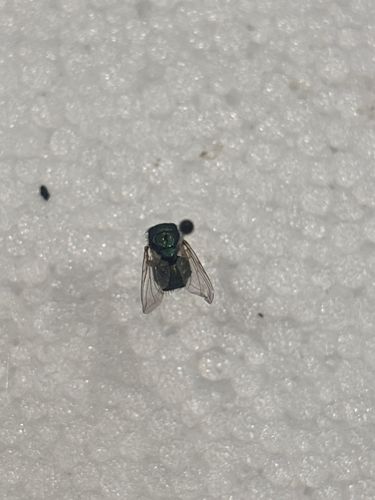Bottle Fly, Green Bottle Fly, or Blue Bottle Fly
Scientific Name: Calliphora spp. (likely Calliphora vomitoria or Lucilia sericata, given the green/blue metallic sheen)
Order & Family: Diptera, Calliphoridae (Blow Flies)
Size: 6-12 mm

Natural Habitat
Globally distributed, often found around decaying organic matter, carrion, garbage, and feces. They are common in urban, suburban, and rural environments.
Diet & Feeding
Adult blow flies feed on nectar, decaying fruit, and other sugary substances. Their larvae (maggots) are scavengers, feeding on carrion, decaying meat, and sometimes live tissues in myiasis cases.
Behavior Patterns
Adults are strong fliers and are attracted to odors from decaying organic matter, which they use to locate suitable sites for egg-laying. Females lay large clutches of eggs on carrion, open wounds, or refuse. The larvae develop rapidly, passing through several instars, before pupating in the soil. They are often among the first insects to arrive at a carcass, making them useful in forensic entomology.
Risks & Benefits
Risks: Can transmit pathogens as they move between decaying matter and human food. Their larvae can cause myiasis (infestation of living tissue) in animals and occasionally humans. Benefits: Important decomposers, helping to break down organic waste. Medically, sterile maggots of certain species (like Lucilia sericata) are used in maggot debridement therapy to clean necrotic tissue from wounds. Also crucial in forensic entomology for estimating time of death.
Identified on: 9/19/2025